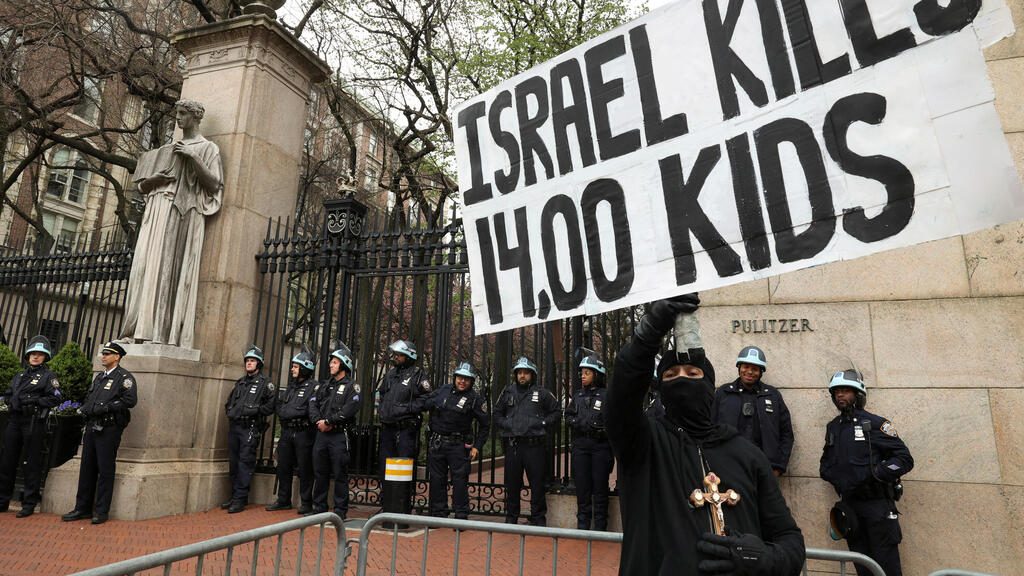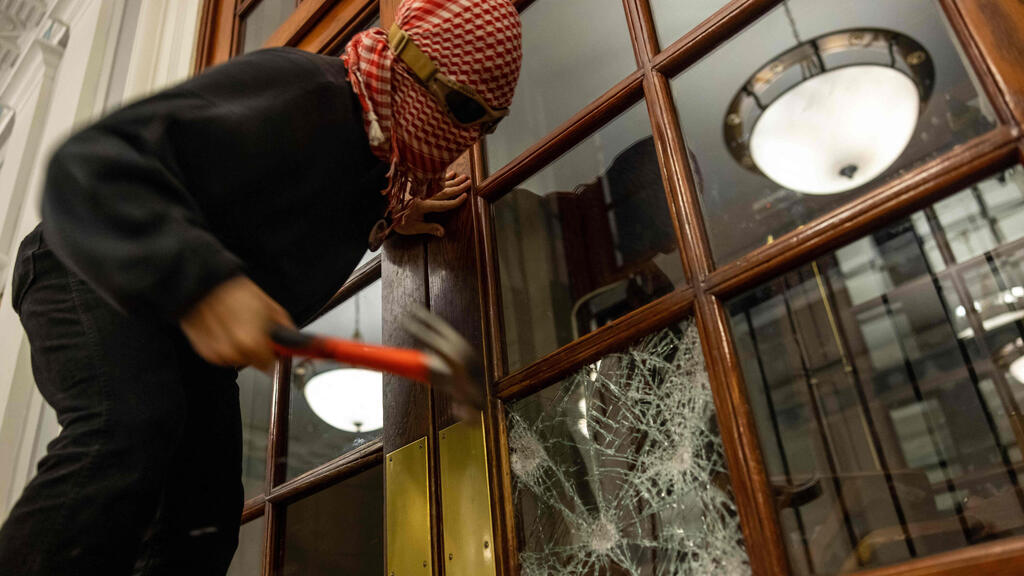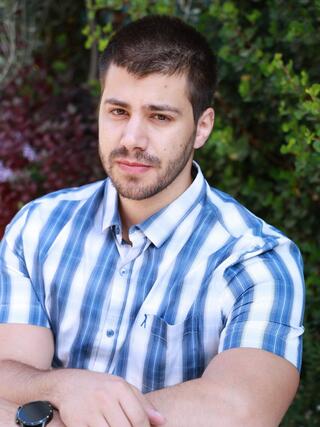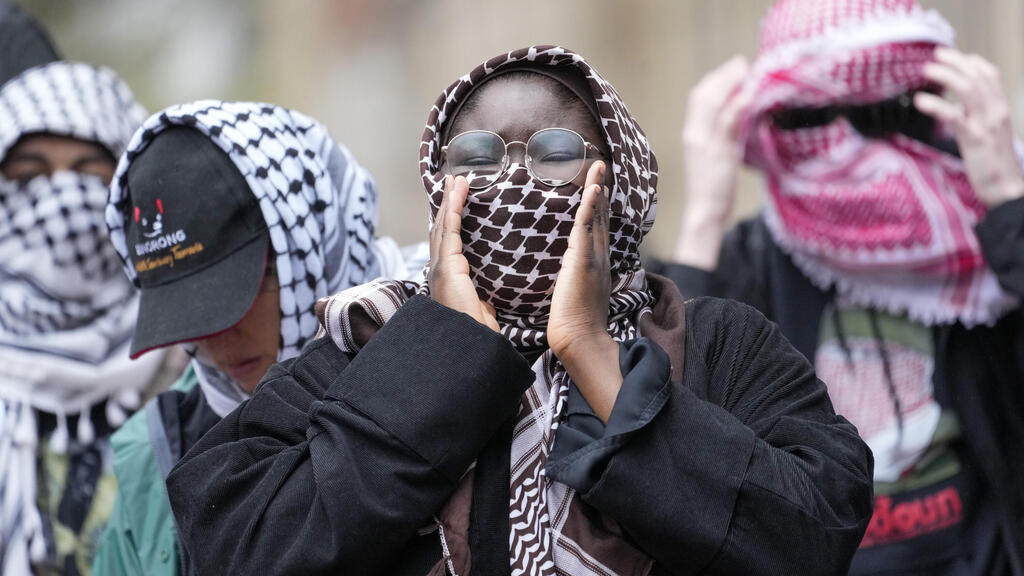The anti-Israel protests that have been taking place on college campuses are unprecedented over a 50 year-perspective. This level of violence and chaos caused by protesters and professional agitators has not been seen since the height of the 1960s during the New Left protests against the Vietnam War.
One of the possible psychological explanations for the fervor and tenacity that the anti-Israel protests managed to invoke from young students coming from the upper echelons of the socioeconomic ladder who know very little about a conflict over 6,000 miles away from them is the story that pro-Hamas organizers have managed to inculcate in the young students’ minds, and their place in that story.
In the classical progressive narrative, the evil forces that rule the world via oppressive systems and institutions can only be fought through tenacious, relentless bottom-up activism. The activist creates a societal change that ripples throughout society, even if the change that is achieved is only symbolic. The agents of change are avant-garde youngsters who are few and far less powerful than the hegemonic institutions that are complicit with the injustice that they are fighting.
Eventually, the determined agents of change achieve their goals through incessant pressure and acts of defiance that could even cross the line into breaking the law. After all, they are dissidents who are fighting “the system” and are willing to be imprisoned for it and be hailed as martyred heroes in their own myth. In this myth, the activist is the unhailed hero in the story who is ahead of his or her time in pushing the right cause and being on the right side of history. Any pushback that the activist faces because of his activities from places that are seen as part of the “corrupt system” that he is fighting only reinvigorates him in his own self-righteous cause and makes him view himself as the tortured hero in his own story.
3 View gallery


Police stand at the entrance to Columbia University under a sign accusing Israel of killing children in Gaza
(Photo: Reuters)
This myth has been a very potent force in pushing young progressives from different generations in participating in edgy, confrontational, exuberant and attention-seeking activities. It makes the participant a hero in his own myth and creates a romantic lens that the individual is able to view his life from. The individual comes to see himself as a brave revolutionary who stands up for his principles even when there is a price to pay and that he would carry his actions as a badge of honor for the rest of his life. This creates a sense of purpose and community for young people who have yet to find their place and purpose in the world.
Progressive myths present Hamas with a golden opportunity
This powerful psychological force combined with the “progressive” myths gave pro-Palestinian/anti-Israel activists a golden opportunity to brand the Palestinian issue as the issue of oppression of the day that progressives should get behind.
They managed to brand the Gaza war as the new evil that this generation of progressives must fight as was the case when they fought apartheid South Africa in 1985, the Vietnam War in 1968 and the war in Cambodia in 1970. In some cases, the Palestinian cause, rich with symbolism such as the keffiyeh and the Palestinian flag, coalesced with other themes in the Progressive agenda – disdain for the system, the police, social groups perceived as victimizers, all blended with a BLM/Antifa-style vandalism and anarchism.
In this mythology, the universities are part of “the system” and the oppressive “establishment” that support Israel along with the U.S. government, and the West in general – all of which are loathsome evils in the radical left narrative . According to this view, the West and the U.S. are a rotten evil, and it is the role of the progressive justice warrior to side with the West’s enemies – the Palestinians, Iran, the Houthis and Hezbollah.
The organizers chose to create encampments in similar locations of historic sites that are seen in black and white photographs to show the elegance of the repetition of historical cycle of “progressive” change. Needless to say, relentless behind-the-scenes work on creative and organization was put in practice, backed with financial support from heavy investors in these types of social causes.
Symbolically, the students in Columbia chose to occupy Hamilton Hall, which was occupied by protesters fighting against the Vietnam War. This sense of historicism, the belief that events in a certain historical context have a dialectical relationship to pasts events and that history progresses according to certain laws, allows protest organizers to mythologize the protests and provide the participants the sense that they are participating in a world-changing historic event in which they are the heroes.
3 View gallery


Anti-Israel protester breaks into Columbia University's Hamilton Hall
(Photo: Alex Kent / Getty Images )
Protesters get the sense that history teaches them that eventually their struggle succeeds as was the case in divestment from South Africa - which led to the end of apartheid - and the rise of symbolic activist Nelson Mandela, and pulling out of the Vietnam war, such that their victory would eventually come when the universities cut ties with Israel. This righteous indignation that is instilled in this mythological story telling of the meek against the powerful allows protesters to self-legitimize violent actions of vandalism, attacking dissenters and intimidating any opposition. They believe that they are the heirs of protesters in Columbia that barricaded themselves inside the university and prevented classes from taking place for over a week.
Students demand to be given "humanitarian aid"
The protests are symptoms of a mass delusion that has been percolating among young to the extent that the protesters are completely impervious and lack the ability to see the absurdity in the discrepancy between the way they view themselves and as they are. The scenes of a student protest leader in Columbia University who demanded that the university provide students who barricaded themselves inside the university building with “humanitarian aid” is the paramount example of delusion.
 Atar Porat
Atar Porat Students act out their fantasy in which they are victims of oppression, creating a parallel between themselves and Gazans who need “humanitarian aid”, while ignoring their inherent privilege of studying in the most elite institutions in the world in the richest country in the world.
Students view themselves as fearless revolutionaries in their own minds, when in reality they are acting out a perverted self-indulgent narrative that is narcissistic, delusional and performative in its essence. Young progressives’ fascination with pseudo revolutionaries and terrorists will be studied by future historians and political psychologists, but until then leaders must focus on an issue that is often overlooked these days – providing a real historical education for the young. This would surely reduce the tiresome diatribes by the ignorant starting with the words “educate yourself.”
Atar Porat is an independent author at the Israel Defense and Security Forum's (IDSF) Research Department.



